1. Greenwood MP, Greenwood M, Romanova EV, Mecawi AS, Paterson A, Sarenac O, Japundžić-Žigon N, Antunes-Rodrigues J, Paton JFR, Sweedler JV, Murphy D. 2018; The effects of aging on biosynthetic processes in the rat hypothalamic osmoregulatory neuroendocrine system. Neurobiol Aging. 65:178–91. DOI:
10.1016/j.neurobiolaging.2018.01.008. PMID:
29494864. PMCID:
PMC5878011.

2. Lee B, Jung JH, Kim HS. 2012; Assessment of red onion on antioxidant activity in rat. Food Chem Toxicol. 50:3912–9. DOI:
10.1016/j.fct.2012.08.004. PMID:
22902824.

8. Gipson IK. 2013; Age-related changes and diseases of the ocular surface and cornea. Invest Ophthalmol Vis Sci. 54:ORSF48–53. DOI:
10.1167/iovs.13-12840. PMID:
24335068.

10. Aragona P, Giannaccare G, Mencucci R, Rubino P, Cantera E, Rolando M. 2021; Modern approach to the treatment of dry eye, a complex multifactorial disease: a P.I.C.A.S.S.O. board review. Br J Ophthalmol. 105:446–53. DOI:
10.1136/bjophthalmol-2019-315747. PMID:
32703782. PMCID:
PMC8005804.
11. Mete R, Oran M, Topcu B, Oznur M, Seber ES, Gedikbasi A, Yetisyigit T. 2016; Protective effects of onion (Allium cepa) extract against doxorubicin-induced hepatotoxicity in rats. Toxicol Ind Health. 32:551–7. DOI:
10.1177/0748233713504807. PMID:
24193056.

12. Lee SU, Lee JH, Choi SH, Lee JS, Ohnisi-Kameyama M, Kozukue N, Levin CE, Friedman M. 2008; Flavonoid content in fresh, home-processed, and light-exposed onions and in dehydrated commercial onion products. J Agric Food Chem. 56:8541–8. DOI:
10.1021/jf801009p. PMID:
18759442.

13. Nan L, Huang J, Li Y, Cui C, Peng G, Xie B, Liu H, Liu Y. 2019; Study on the extraction and antioxidant properties of flavonoids from onion. AIP Conf Proc. 2079:020005. DOI:
10.1063/1.5092383.

14. Wilson EA, Demmig-Adams B. 2007; Antioxidant, anti-inflammatory, and antimicrobial properties of garlic and onions. Nutr Food Sci. 37:178–83. DOI:
10.1108/00346650710749071.

15. Upadhyay RK. 2016; Nutraceutical, pharmaceutical and therapeutic uses of Allium cepa: a review. Int J Green Pharm. 10(Suppl):S46–64.
16. Eady CC, Kamoi T, Kato M, Porter NG, Davis S, Shaw M, Kamoi A, Imai S. 2008; Silencing onion lachrymatory factor synthase causes a significant change in the sulfur secondary metabolite profile. Plant Physiol. 147:2096–106. DOI:
10.1104/pp.108.123273. PMID:
18583530. PMCID:
PMC2492635.

18. Kim S, Park YW, Lee E, Park SW, Park S, Noh H, Kim JW, Seong JK, Seo K. 2016; Effect of onion extract on corneal haze suppression after air assisted lamellar keratectomy. J Vet Med Sci. 78:419–25. DOI:
10.1292/jvms.15-0455. PMID:
26607134. PMCID:
PMC4829509.

19. Javadzadeh A, Ghorbanihaghjo A, Bonyadi S, Rashidi MR, Mesgari M, Rashtchizadeh N, Argani H. 2009; Preventive effect of onion juice on selenite-induced experimental cataract. Indian J Ophthalmol. 57:185–9. DOI:
10.4103/0301-4738.49391. PMID:
19384011. PMCID:
PMC2683439.

20. Nejabat M, Salehi A, Noorani Azad P, Ashraf MJ. 2014; Effects of onion juice on the normal flora of eyelids and conjunctiva in an animal model. Jundishapur J Microbiol. 7:e9678. DOI:
10.5812/jjm.9678. PMID:
25147716. PMCID:
PMC4138639.

21. Owji N, Khalili MR, Khademi B, Shirvani M, Sadati MS. 2020; Comparison of the effectiveness of onion extract, topical steroid, and petrolatum emollient in cosmetic appearance of upper blepharoplasty scar. J Curr Ophthalmol. 32:408–13. DOI:
10.4103/JOCO.JOCO_39_20. PMID:
33553845. PMCID:
PMC7861112.
22. El-Demerdash FM, Yousef MI, El-Naga NI. 2005; Biochemical study on the hypoglycemic effects of onion and garlic in alloxan-induced diabetic rats. Food Chem Toxicol. 43:57–63. DOI:
10.1016/j.fct.2004.08.012. PMID:
15582196.

23. Yu H, Zhong H, Chen J, Sun J, Huang P, Xu X, Huang S, Zhong Y. 2020; Efficacy, drug sensitivity, and safety of a chronic ocular hypertension rat model established using a single intracameral injection of hydrogel into the anterior chamber. Med Sci Monit. 26:e925852. DOI:
10.12659/MSM.925852. PMID:
32997651. PMCID:
PMC7534505.

24. Dias AC, Módulo CM, Jorge AG, Braz AM, Jordão AA Jr, Filho RB, de Paula JS, Rocha EM. 2007; Influence of thyroid hormone on thyroid hormone receptor beta-1 expression and lacrimal gland and ocular surface morphology. Invest Ophthalmol Vis Sci. 48:3038–42. DOI:
10.1167/iovs.06-1309. PMID:
17591870.
25. Bancroft JD, Gamble M. 2008. Theory and practice of histological techniques. 6th ed. Churchill Livingstone Elsevier;Philadelphia: p. 72.
26. Hwang HB, Oh TH, Kim HS. 2013; Effect of ethanol-treated mid-peripheral epithelium on corneal wound healing in rabbits. BMC Ophthalmol. 13:27. DOI:
10.1186/1471-2415-13-27. PMID:
23822645. PMCID:
PMC3703275.

27. Lei H, Liu H, Ding Y, Ge L. 2014; Immunohistochemical localization of Pax6 in the developing tooth germ of mice. J Mol Histol. 45:373–9. DOI:
10.1007/s10735-014-9564-5. PMID:
24477661.

28. Burgess D, Zhang Y, Siefker E, Vaca R, Kuracha MR, Reneker L, Overbeek PA, Govindarajan V. 2010; Activated Ras alters lens and corneal development through induction of distinct downstream targets. BMC Dev Biol. 10:13. DOI:
10.1186/1471-213X-10-13. PMID:
20105280. PMCID:
PMC2828409.

29. Wang G, Chen P, Wang Y, Wang Y, Reinach PS, Xue Y, Liu Z, Li C. 2020; Onion epithelial membrane scaffolds transfer corneal epithelial layers in reconstruction surgery. Adv Healthc Mater. 9:e2000469. DOI:
10.1002/adhm.202000469. PMID:
32548957.

30. Kumar S, Modgil S, Bammidi S, Minhas G, Shri R, Kaushik S, Singh V, Anand A. 2020; Allium cepa exerts neuroprotective effect on retinal ganglion cells of pterygopalatine artery (PPA) ligated mice. J Ayurveda Integr Med. 11:489–94. DOI:
10.1016/j.jaim.2019.08.002. PMID:
32088091. PMCID:
PMC7772493.

31. Pradeep SR, inivasan K Sr. 2018; Ameliorative influence of dietary fenugreek (Trigonella foenum-graecum) seeds and onion (Allium cepa) on eye lens abnormalities via modulation of crystallin proteins and polyol pathway in experimental diabetes. Curr Eye Res. 43:1108–18. DOI:
10.1080/02713683.2018.1484146. PMID:
29856678.

33. El-Sayyad HIH, El-Mansi AA, Guida MS, Mohammed EA. 2015; Markers characterizing corneal damage during aging of rat. J Adv Chem. 11:3532–9. DOI:
10.24297/jac.v11i5.4471.

34. Halawa AM. 2011; Age-associated changes in the cornea, lens and retina of the albino rat eye: a histological and immuno-histochemical study. Egyptian J Anat. 34:1–13. DOI:
10.21608/ejana.2011.3649.

35. Baroody RA, Bito LZ, DeRousseau CJ, Kaufman PL. 1987; Ocular development and aging. 1. Corneal endothelial changes in cats and in free-ranging and caged rhesus monkeys. Exp Eye Res. 45:607–22. DOI:
10.1016/S0014-4835(87)80070-2. PMID:
3428387.

37. Yang Y, Hong J, Deng SX, Xu J. 2014; Age-related changes in human corneal epithelial thickness measured with anterior segment optical coherence tomography. Invest Ophthalmol Vis Sci. 55:5032–8. DOI:
10.1167/iovs.13-13831. PMID:
25052994.

38. Lagali N, Germundsson J, Fagerholm P. 2009; The role of Bowman's layer in corneal regeneration after phototherapeutic keratectomy: a prospective study using
in vivo confocal microscopy. Invest Ophthalmol Vis Sci. 50:4192–8. DOI:
10.1167/iovs.09-3781. PMID:
19407024.
39. Zhou Q, Wang Y, Yang L, Wang Y, Chen P, Wang Y, Dong X, Xie L. 2008; Histone deacetylase inhibitors blocked activation and caused senescence of corneal stromal cells. Mol Vis. 14:2556–65. PMID:
19122829. PMCID:
PMC2613076.
40. Patel S, McLaren J, Hodge D, Bourne W. 2001; Normal human keratocyte density and corneal thickness measurement by using confocal microscopy
in vivo. Invest Ophthalmol Vis Sci. 42:333–9. PMID:
11157863.
41. Niederer RL, Perumal D, Sherwin T, McGhee CN. 2007; Age-related differences in the normal human cornea: a laser scanning
in vivo confocal microscopy study. Br J Ophthalmol. 91:1165–9. DOI:
10.1136/bjo.2006.112656. PMID:
17389741. PMCID:
PMC1954900.
42. Gambato C, Longhin E, Catania AG, Lazzarini D, Parrozzani R, Midena E. 2015; Aging and corneal layers: an
in vivo corneal confocal microscopy study. Graefes Arch Clin Exp Ophthalmol. 253:267–75. DOI:
10.1007/s00417-014-2812-2. PMID:
25311652.
43. Jun AS, Chakravarti S, Edelhauser HF, Kimos M. 2006; Aging changes of mouse corneal endothelium and Descemet's membrane. Exp Eye Res. 83:890–6. DOI:
10.1016/j.exer.2006.03.025. PMID:
16777092.

45. Xiao X, Wang Y, Gong H, Chen P, Xie L. 2009; Molecular evidence of senescence in corneal endothelial cells of senescence-accelerated mice. Mol Vis. 15:747–61. PMID:
19381346. PMCID:
PMC2669445.
47. Jorge J, Queirós A, Blasco TF, González-Méijome JM. Peixoto de Matos SC. 2010; Age-related changes of corneal endothelium in normal eyes with a non-contact specular microscope. J Emmetropia. 1:132–9.
48. Zhang H, Qin X, Cao X, Zhang D, Li L. 2017; Age-related variations of rabbit corneal geometrical and clinical biomechanical parameters. Biomed Res Int. 2017:3684971. DOI:
10.1155/2017/3684971. PMID:
29104870. PMCID:
PMC5574220.

49. Dubicanac M, Joly M, Strüve J, Nolte I, Mestre-Francés N, Verdier JM, Zimmermann E. 2018; Intraocular pressure in the smallest primate aging model: the gray mouse lemur. Vet Ophthalmol. 21:319–27. DOI:
10.1111/vop.12434. PMID:
27624923.

50. Sandhas E, Merle R, Eule JC. 2018; Consider the eye in preventive healthcare- ocular findings, intraocular pressure and Schirmer tear test in ageing cats. J Feline Med Surg. 20:1063–71. DOI:
10.1177/1098612X17742528. PMID:
29172875.
51. Melamed S, Ben-Sira I, Ben-Shaul Y. 1980; Corneal endothelial changes under induced intraocular pressure elevation: a scanning and transmission electron microscopic study in rabbits. Br J Ophthalmol. 64:164–9. DOI:
10.1136/bjo.64.3.164. PMID:
7387948. PMCID:
PMC1039380.

52. Janson BJ, Alward WL, Kwon YH, Bettis DI, Fingert JH, Provencher LM, Goins KM, Wagoner MD, Greiner MA. 2018; Glaucoma-associated corneal endothelial cell damage: a review. Surv Ophthalmol. 63:500–6. DOI:
10.1016/j.survophthal.2017.11.002. PMID:
29146208.

53. Yu ZY, Wu L, Qu B. 2019; Changes in corneal endothelial cell density in patients with primary open-angle glaucoma. World J Clin Cases. 7:1978–85. DOI:
10.12998/wjcc.v7.i15.1978. PMID:
31423429. PMCID:
PMC6695540.

54. Beesk N, Perner H, Schwarz D, George E, Kroh LW, Rohn S. 2010; Distribution of quercetin-3,4'-O-diglucoside, quercetin-4'-O-monoglucoside, and quercetin in different parts of the onion bulb (Allium cepa L.) influenced by genotype. Food Chem. 122:566–71. DOI:
10.1016/j.foodchem.2010.03.011.

55. Boots AW, Wilms LC, Swennen EL, Kleinjans JC, Bast A, Haenen GR. 2008;
In vitro and
ex vivo anti-inflammatory activity of quercetin in healthy volunteers. Nutrition. 24:703–10. DOI:
10.1016/j.nut.2008.03.023. PMID:
18549926.
56. Ozgen S, Kilinc OK, Selamoglu Z. 2016; Antioxidant activity of quercetin: a mechanistic review. Turkish J Agric Food Sci Technol. 4:1134–8. DOI:
10.24925/turjaf.v4i12.1134-1138.1069.

57. Zhao L, Wang H, Du X. 2021; The therapeutic use of quercetin in ophthalmology: recent applications. Biomed Pharmacother. 137:111371. DOI:
10.1016/j.biopha.2021.111371. PMID:
33561647.

58. Song X, Wang Y, Gao L. 2020; Mechanism of antioxidant properties of quercetin and quercetin-DNA complex. J Mol Model. 26:133. DOI:
10.1007/s00894-020-04356-x. PMID:
32399900.

59. Xiao X, Shi D, Liu L, Wang J, Xie X, Kang T, Deng W. 2011; Quercetin suppresses cyclooxygenase-2 expression and angiogenesis through inactivation of P300 signaling. PLoS One. 6:e22934. DOI:
10.1371/journal.pone.0022934. PMID:
21857970. PMCID:
PMC3152552.

60. Kliuiev GO, Kolomiichuk SG. 2017; The research of the effect of eye drops containing quercetin for regeneration of the cornea in the experiment. J Tradit Med Clin Natur. 6:222. DOI:
10.4172/2573-4555.1000222.
61. Maugeri G, D'Amico AG, Castrogiovanni P, Saccone S, Federico C, Reibaldi M, Russo A, Bonfiglio V, Avitabile T, Longo A, D'Agata V. 2019; PACAP through EGFR transactivation preserves human corneal endothelial integrity. J Cell Biochem. 120:10097–105. DOI:
10.1002/jcb.28293. PMID:
30548314.

62. Zieske JD, Takahashi H, Hutcheon AE, Dalbone AC. 2000; Activation of epidermal growth factor receptor during corneal epithelial migration. Invest Ophthalmol Vis Sci. 41:1346–55. PMID:
10798649.
63. Davis J, Duncan MK, Robison WG Jr, Piatigorsky J. 2003; Requirement for Pax6 in corneal morphogenesis: a role in adhesion. J Cell Sci. 116(Pt 11):2157–67. DOI:
10.1242/jcs.00441. PMID:
12692153.

64. Mort RL, Bentley AJ, Martin FL, Collinson JM, Douvaras P, Hill RE, Morley SD, Fullwood NJ, West JD. 2011; Effects of aberrant Pax6 gene dosage on mouse corneal pathophysiology and corneal epithelial homeostasis. PLoS One. 6:e28895. DOI:
10.1371/journal.pone.0028895. PMID:
22220198. PMCID:
PMC3248408.

65. Chen HB, Yamabayashi S, Ou B, Tanaka Y, Ohno S, Tsukahara S. 1997; Structure and composition of rat precorneal tear film. A study by an
in vivo cryofixation. Invest Ophthalmol Vis Sci. 38:381–7. PMID:
9040471.
66. Cramer CS, Mandal S, Sharma S, Nourbakhsh SS, Goldman I, Guzman I. 2021; Recent advances in onion genetic improvement. Agronomy. 11:482. DOI:
10.3390/agronomy11030482.

68. Kang SS, Li T, Xu D, Reinach PS, Lu L. 2000; Inhibitory effect of PGE2 on EGF-induced MAP kinase activity and rabbit corneal epithelial proliferation. Invest Ophthalmol Vis Sci. 41:2164–9. PMID:
10892858.
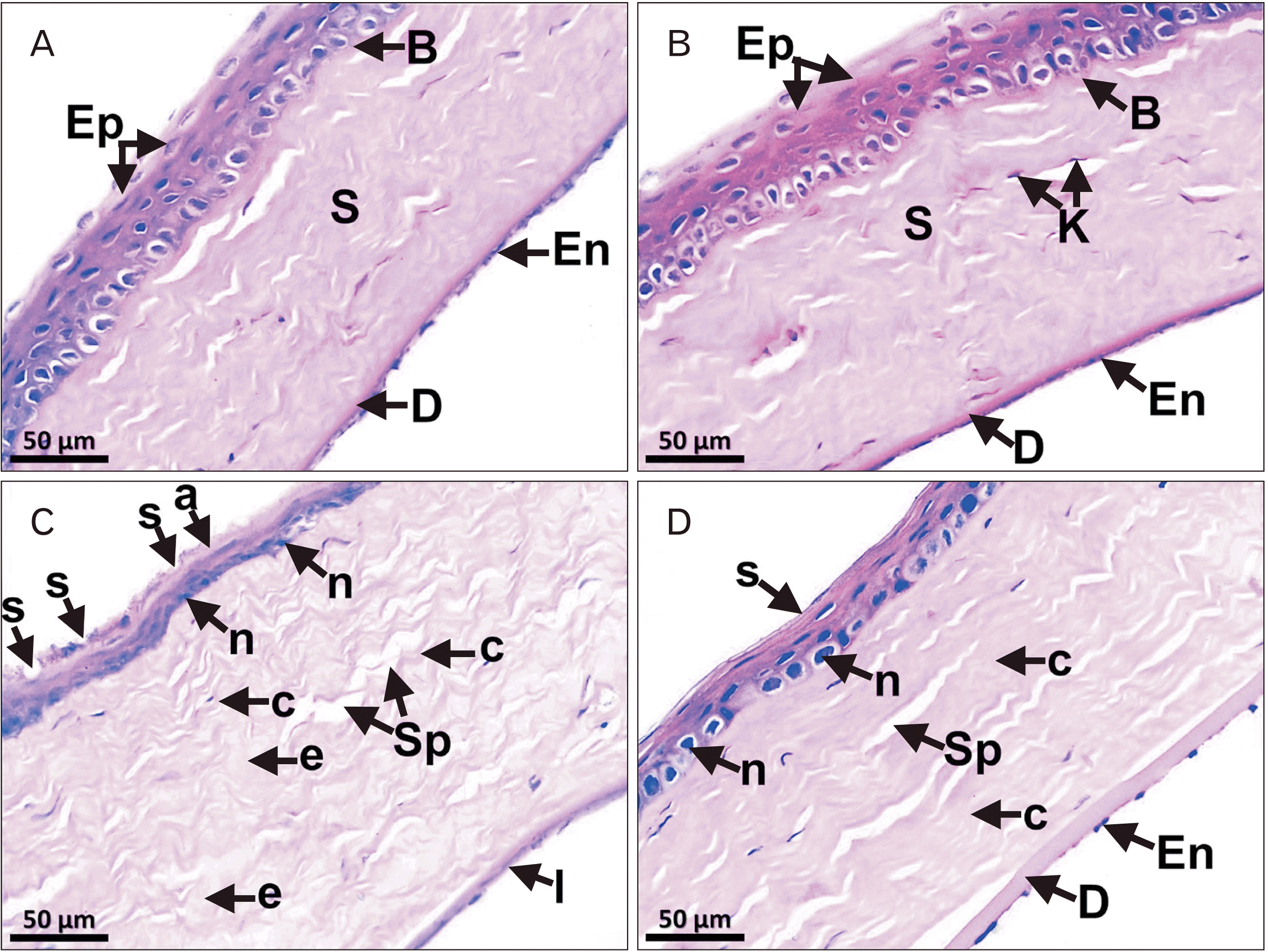
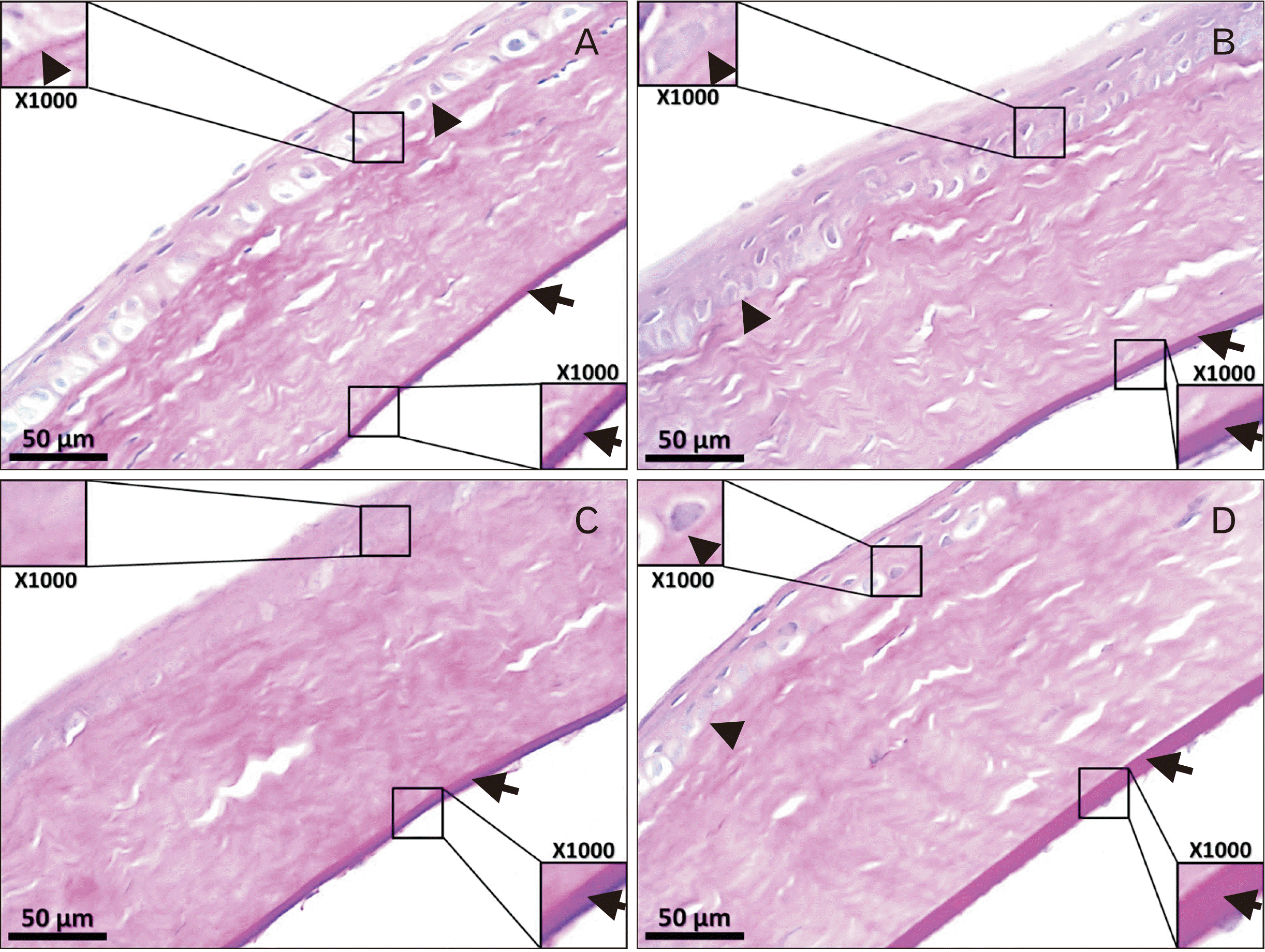
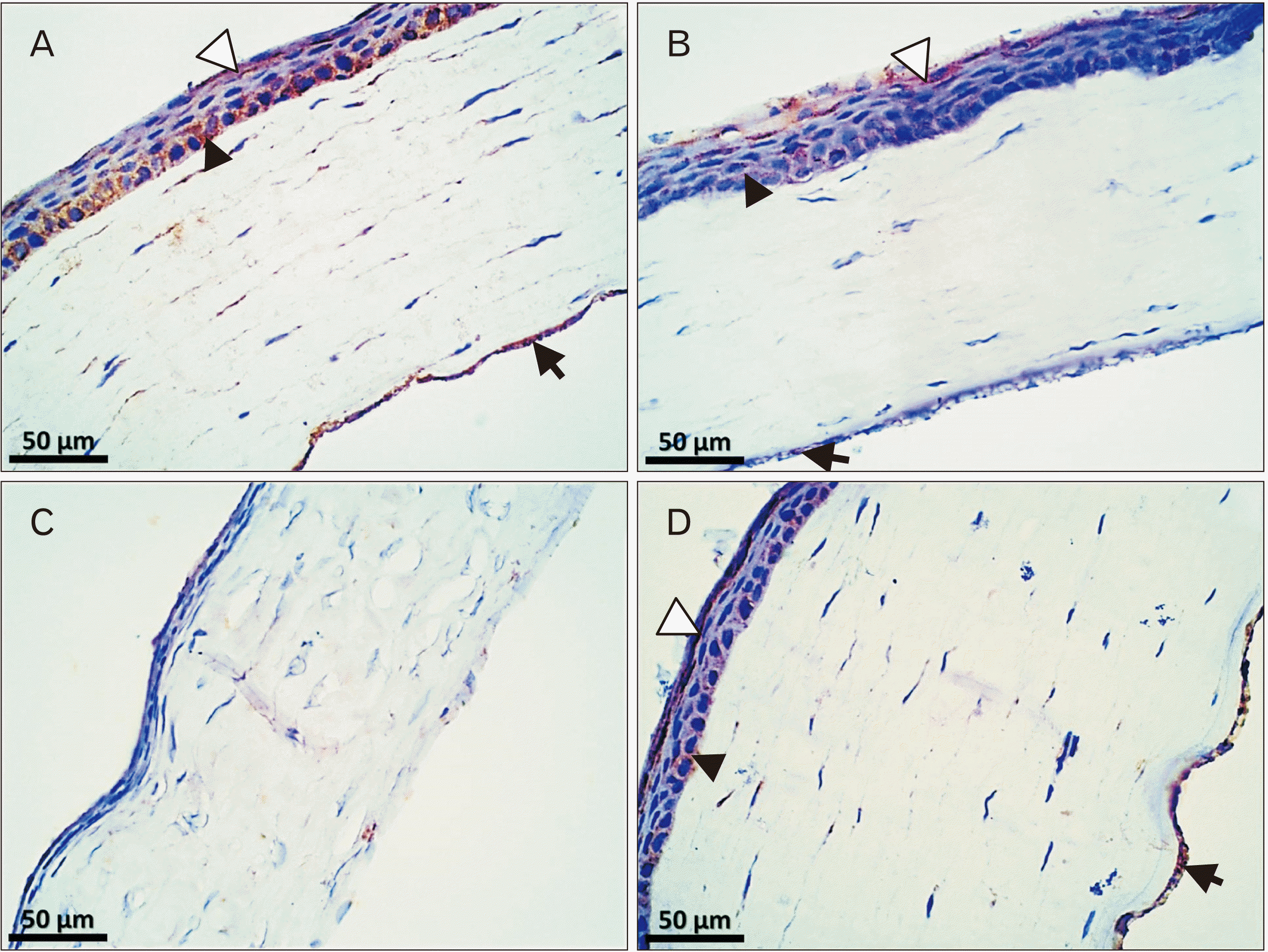
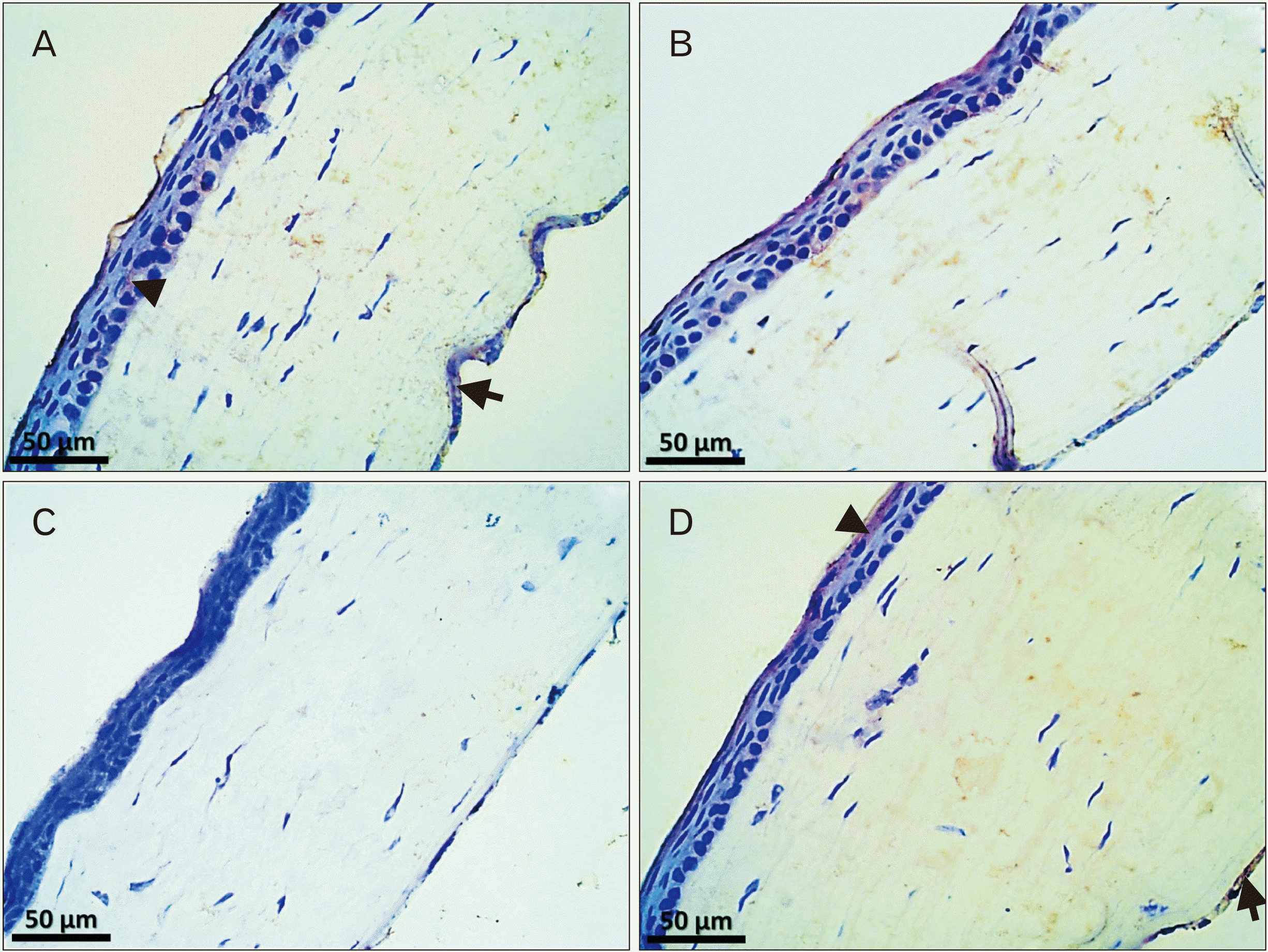




 PDF
PDF Citation
Citation Print
Print



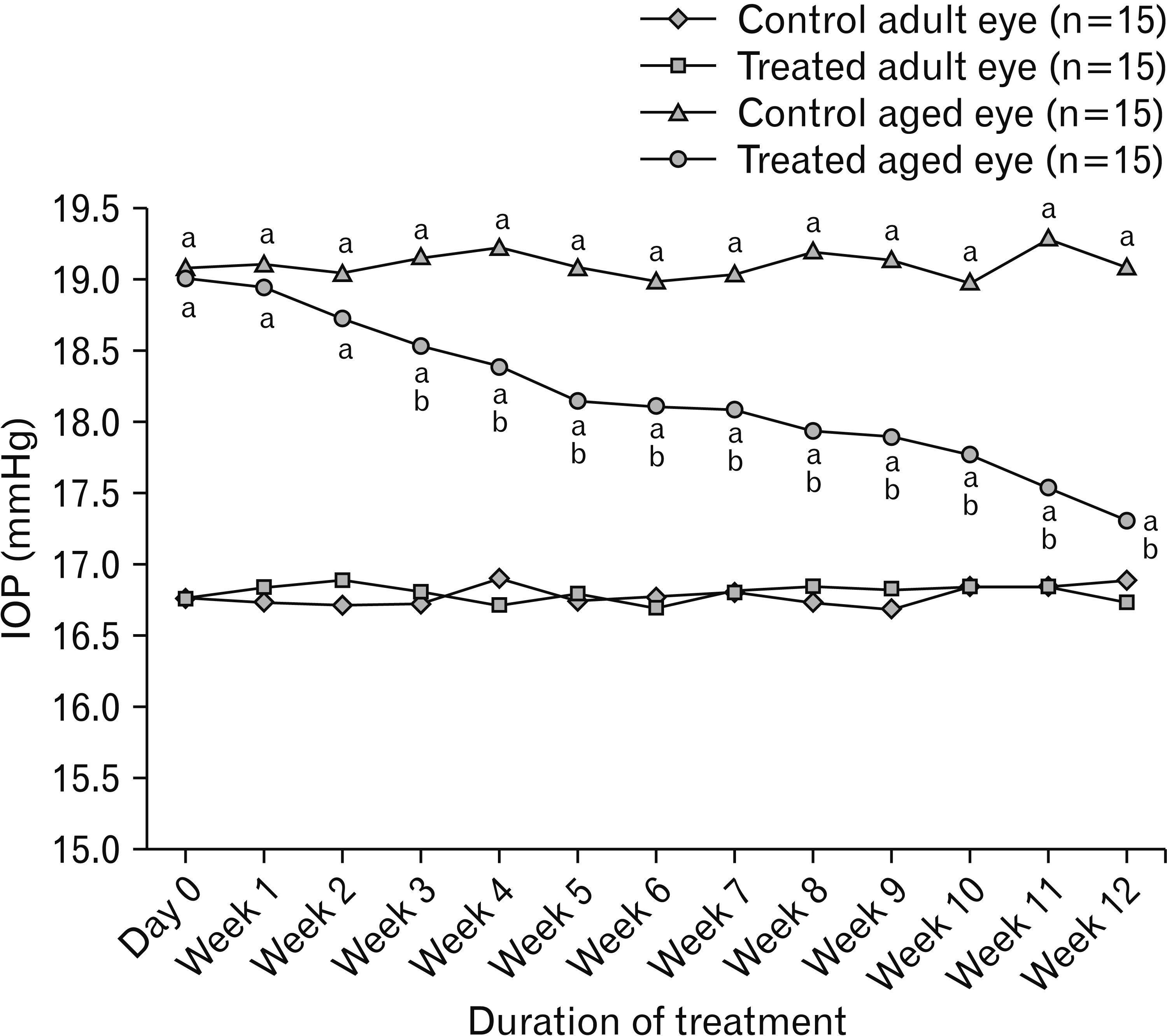
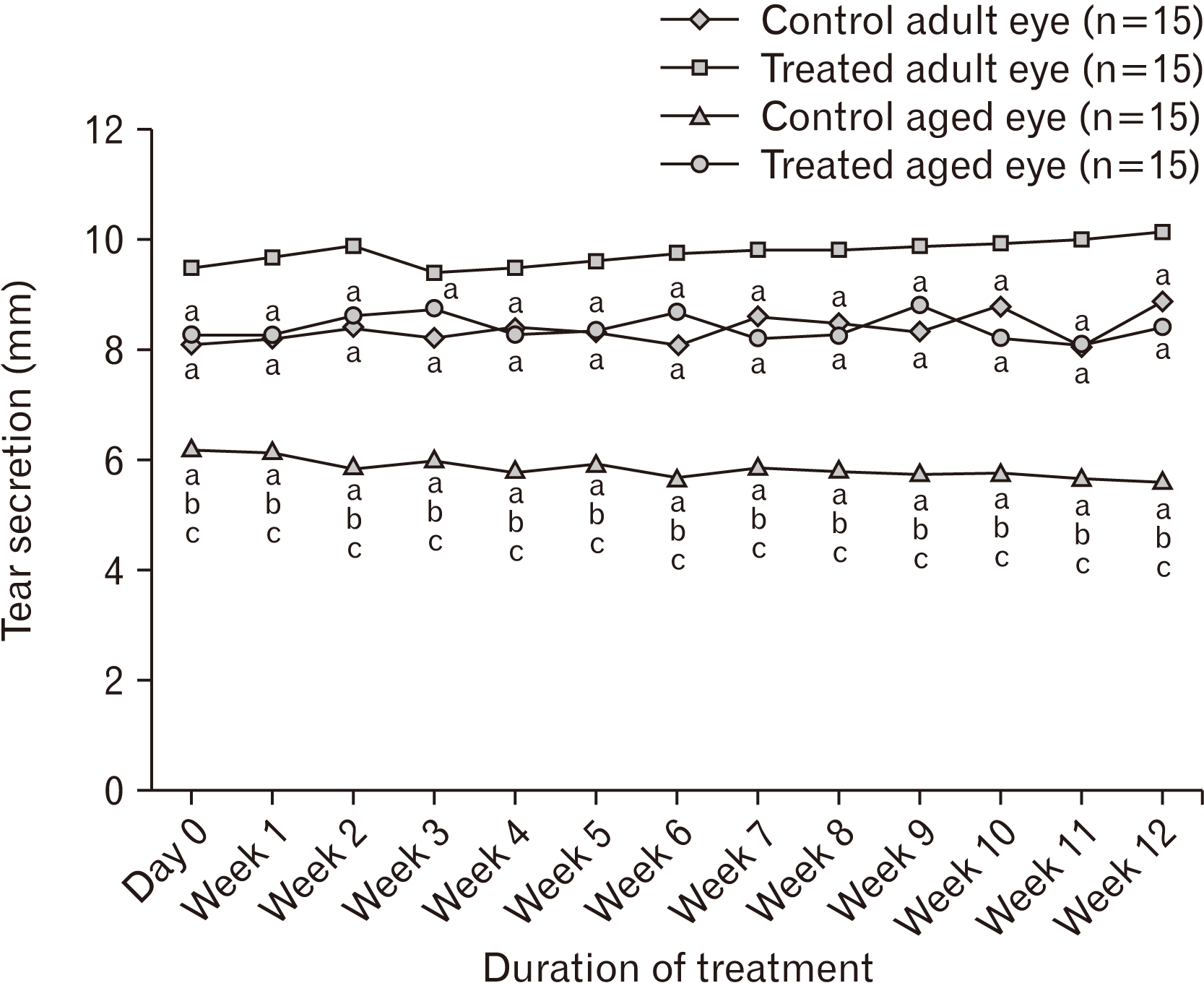
 XML Download
XML Download